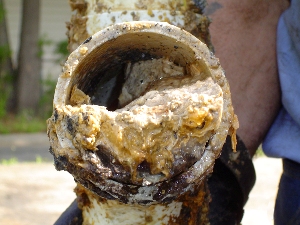How to Choose Grease Trap or Interceptor Sizing?
The size of a grease trap is, needless to say, the most important thing for an establishment to consider. This is tied to the rating that hydro-mechanical interceptors have in terms of the allowable maximum drainage in gallons per minute (GPM). Naturally, hydro-mechanical receptors have a 100gpm handling capacity, and anything beyond this should be left to the gravity receptor.
Things that influence the grease trap/interceptor sizing are:
-Sizing as per Values of Drain Fixture Unit (DFU)
-Sizing as per the volume of total flowing fixtures
-Sizing based on waste pipe’s diameter
To this end, it becomes necessary to have a manufacturer that provides charts with GPM flowing listing based on the diameter of the pipe.
Grease interceptor size
Provided you know the waste pipe's size and type of the grease trap/grease interceptor, this method becomes very simple. Similarly, using DFU values for sizing is straightforward because one only has to sum up the DFU values for the waste flowing into the grease trap.
Some basic math is required when calculating the grease interceptors' size based on the flow and capacity of the actual waste.
First, you’ll need to determine the fixture’s dimensions, which will, in turn, determine the fixture’s volume in cubic inches.
Secondly, that figure would need to be converted to gallons. To better illustrate this, divide the volume aforementioned (cubic inches) by 231 to find the number of gallons of waste.
Thirdly, multiply the figure resulting from above by 75%. This is because it is very unlikely that the fixture will fill to the brim even on busy occasions.
Finally, calculate the flowing/draining rate.
So how is a flowing rate calculated?
You’d need to fill the fixture with water to 75% capacity, which is 3/4 of the total fixture. Next, time the length of the period it takes for the fixture to clear out completely.
Lastly, take the result you had in the third step above and divide it by the time it takes for the fixture to come out. The result you get is now the rate in GPM.
At this stage, it would be advisable to seek the guidance of a professional or a manufacturer. Also, depending on the local laws, you may need to consult the local health and hygiene department to be sure that the grease trap you have fits your needs as, let's say, with owning restaurant kitchens.
If a grease trap is too large, and you run the risk of damaging things downstream as sulfuric acid may be created within the tank.
If grease traps are too small, and the unit will not do its purpose of preventing FOG from passing through freely unless it’s periodically cleaned.
Furthermore, the Code of Uniform Plumbing that acts as a guideline in this space prescribes that unless specifically required by the jurisdiction’s authority, dishwashers are not to be attached to a grease trap.
This is because chemicals and other detergents used can emulsify the FOG rendering the grease trap/grease inceptor unusable.
Again, the Code only permits garbage disposals to flow unhampered into drainage systems, affecting plumbing. It goes without saying that it is imperative to check with the local authority before purchasing or getting down with the sizing process of grease traps.
What Could Possibly Go Wrong With Grease Traps?
If the trapped FOG is not pumped out when needed, it becomes thick and may begin to escape via the outlet tee.

Also, when blocking occurs in the downstream pipes, the grease traps/grease inceptors and drains containing the wastewater could flood out.
This could consequently lead to your commercial kitchen and business being shut down by local sanitary officials for wastewater plumbing system damage. Grease traps/grease inceptors are a way to prevent this.